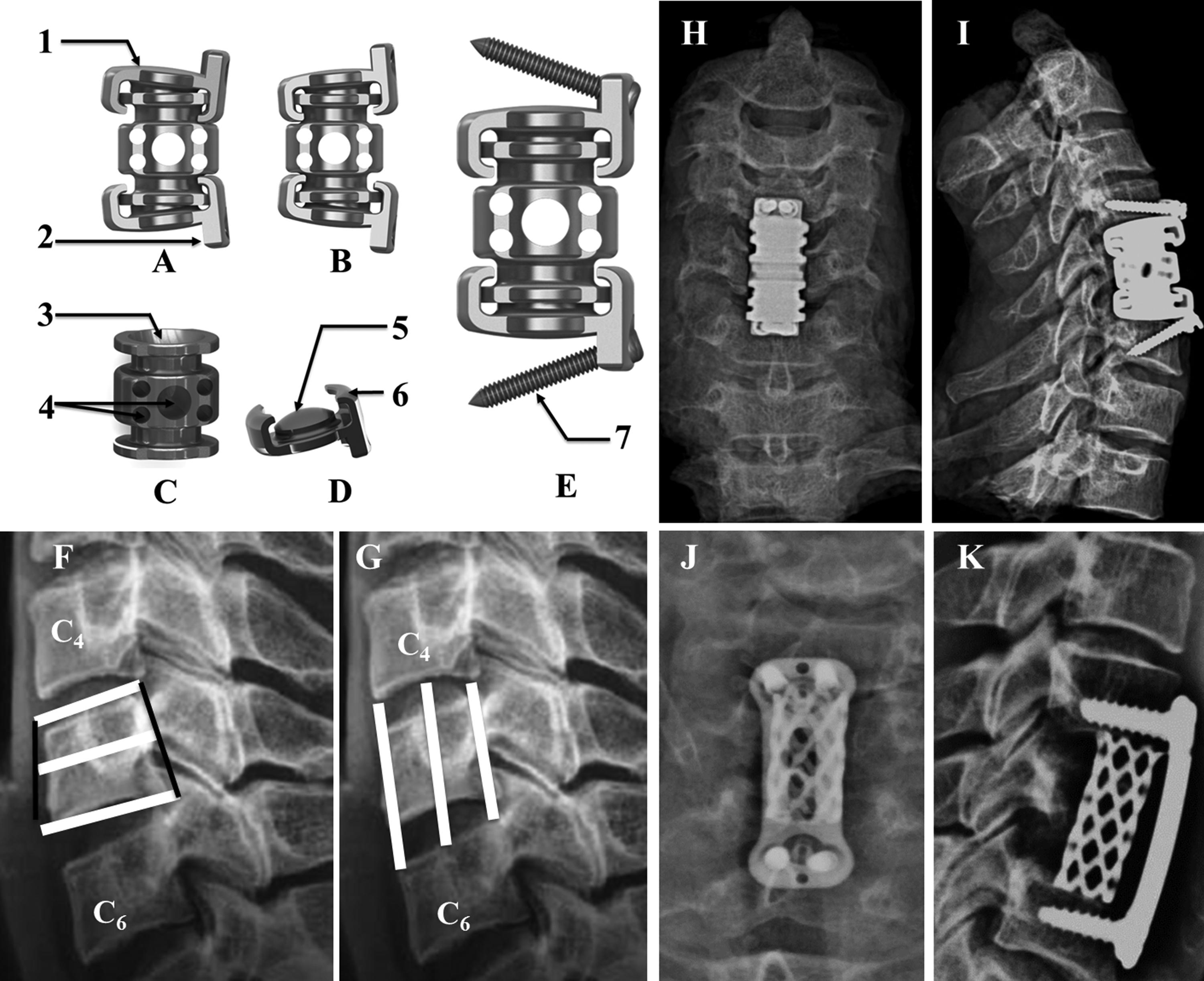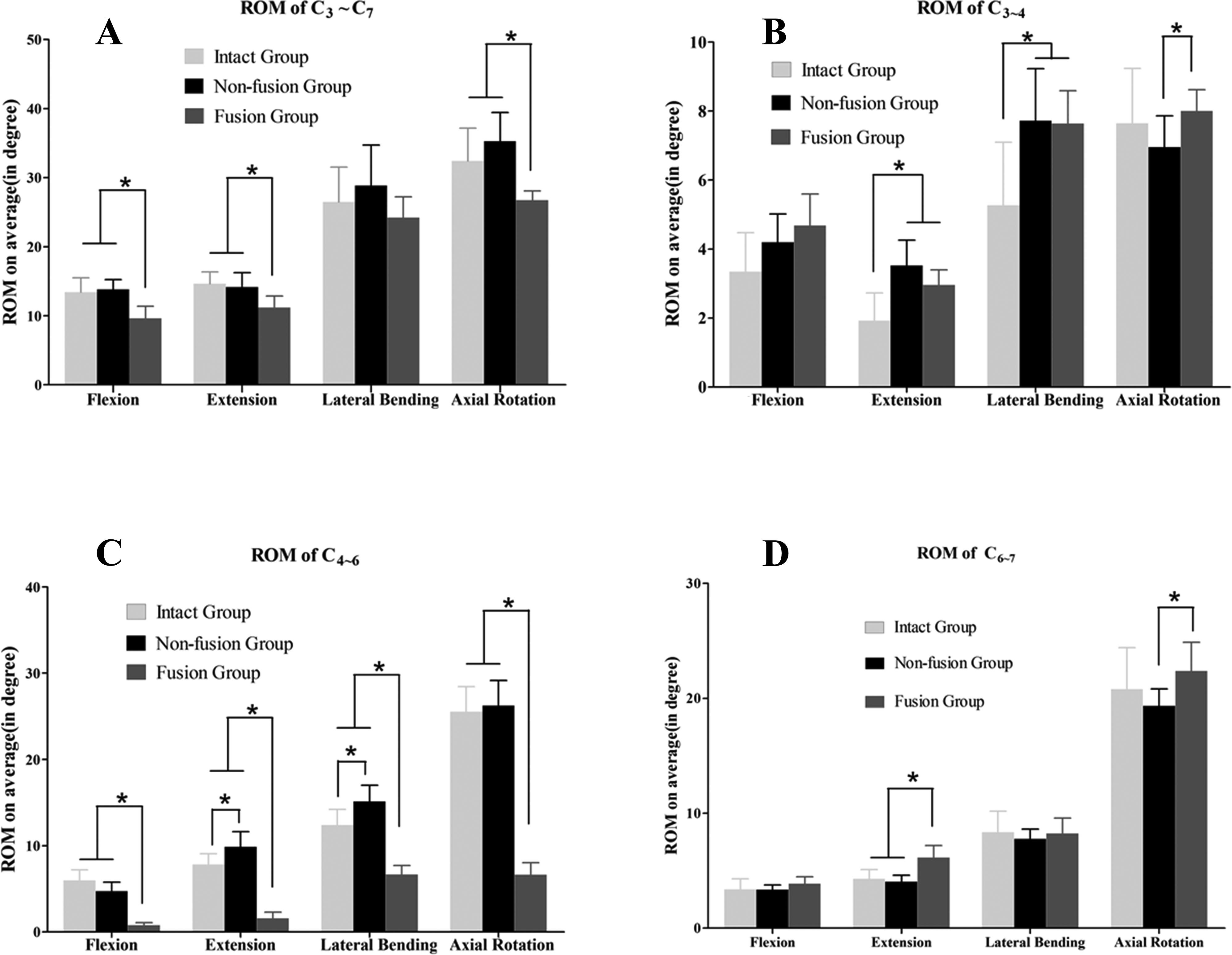OBJECTIVE:
To determine the range of motion and stability of the human cadaveric cervical spine after the implantation of a novel artificial disc and vertebra system by comparing an intact group and a fusion group.
METHODS:
Biomechanical tests were conducted on 18 human cadaveric cervical specimens. The range of motion and the stability index range of motion were measured to study the function and stability of the artificial disc and vertebra system of the intact group compared with the fusion group.
RESULTS:
In all cases, the artificial disc and vertebra system maintained intervertebral motion and reestablished vertebral height at the operative level. After its implantation, there was no significant difference in the range of motion (ROM) of C3-7 in all directions in the non-fusion group compared with the intact group (p>0.05), but significant differences were detected in flexion, extension and axial rotation compared with the fusion group (p<0.05). The ROM of adjacent segments (C3-4, C6-7) of the non-fusion group decreased significantly in some directions compared with the fusion group (p<0.05). Significant differences in the C4-6 ROM in some directions were detected between the non-fusion group and the intact group. In the fusion group, the C4-6 ROM in all directions decreased significantly compared with the intact and non-fusion groups (p<0.01). The stability index ROM (SI-ROM) of some directions was negative in the non-fusion group, and a significant difference in SI-ROM was only found in the C4-6 segment of the non-fusion group compared with the fusion group.
CONCLUSION:
An artificial disc and vertebra system could restore vertebral height and preserve the dynamic function of the surgical area and could theoretically reduce the risk of adjacent segment degeneration compared with the anterior fusion procedure. However, our results should be considered with caution because of the low power of the study. The use of a larger sample should be considered in future studies.
Biomechanics; Cervical vertebral corpectomy and fusion; Adjacent segment disease; Artificial disc and vertebra system; Range of motion; Stability index range of motion


